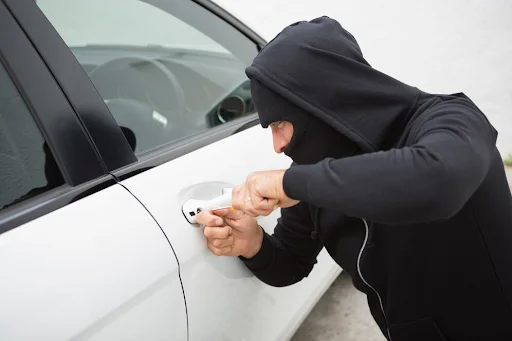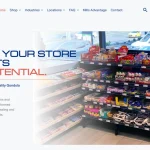You’re One Step Away From Buying a Stolen Car—Unless You Read This
Imagine spotting the perfect car. Low mileage. Clean interior. Affordable price. Now imagine handing over your money—only to have the police knock on your door a week later. It happens more often than you’d think. Stolen vehicle don’t always look suspicious. They’re polished. They’re listed with professional photos. And they’re circulating in the same online marketplaces you trust.
So, how to check if a vehicle is reported stolen before it becomes your costly mistake?
Run a VIN Check—It Could Save You Thousands
Each vehicle is assigned a unique VIN—a 17-digit vehicle identification number that reveals everything from model and engine to whether it has ever been reported stolen. It’s your first line of defense when inspecting any used vehicle.
Check Any Vehicle’s VIN for Free in Seconds — don’t wait until the damage is done.
Whether buying from a private seller, auction, or local lot, the VIN is your gateway into vehicle specifications, service records, and theft history. And once you’ve verified a car’s legitimacy, it’s worth considering extended auto warranty coverage to protect your investment from unexpected repair costs down the road.
Why Stolen Cars Are Still Sold Publicly
It might seem strange—car theft is illegal, and yet stolen cars are bought and sold every day. Here’s why:
- Fraudulent titles and forged VIN numbers.
- Lack of proper title search or VIN check by consumers.
- Motor vehicles stolen across state lines or from out-of-country fleets.
- Insurance company delays in updating national databases.
Without digging deeper, buyers get trapped. And once stolen vehicles are recovered, they don’t get refunds.
What Are the Red Flags of a Stolen Vehicle?
Some clues are subtle. Others shout for attention. Look out for:
- Mismatched VIN number locations.
- No access to service records.
- Reluctance to allow a VIN search or title search.
- Pressure to purchase quickly or pay in cash only.
- Incomplete vehicle specs or missing ownership documentation.
If the car’s VIN feels altered or the seller doesn’t allow a full inspection, walk away.
Where Stolen Vehicle Records Are Stored
In the U.S., several authoritative sources maintain vehicle theft data:
- NICB Website (National Insurance Crime Bureau)
- Insurance Crime Bureau NICB internal systems
- DMV records in your division of state
- Police station databases
- Independent free services linked to dealership networks
Each platform may access a different database, so combining tools gives the most accurate view.
How to Perform a VIN Check Step-by-Step
Don’t worry—this process doesn’t require a mechanic. You just need time, attention, and the correct vehicle identification number VIN.
Step 1: Locate the VIN
Common locations include:
- Driver-side dashboard (viewable through the windshield)
- Driver-side door jamb
- Under the hood near the engine
Step 2: Verify It Matches Across the Vehicle
Inconsistencies across locations are a major red flag. Stolen cars may have tampered plates or replacement components.
Step 3: Run a Trusted Online VIN Search
Use government databases or verified platforms. Some services like the NICB website offer free access to basic vehicle theft data.
Step 4: Analyze the Full Report
A trustworthy report should show:
- Theft history
- Service records
- Previous owners
- Accident and repair history
- Open recalls
- Title branding (e.g., salvage, rebuilt)
If the report shows a stolen status or can’t find the vehicle, don’t proceed.
What If a Car Is Reported as Stolen After You Bought It?
This happens—especially with unverified sellers. If you unknowingly buy a stolen car, the police have the legal right to inspect and seize it. You could lose the money, the car, and your peace of mind.
Worse, some insurance companies won’t cover losses tied to fraud or theft when proper due diligence wasn’t performed.
That’s why it’s essential to perform a VIN search before any purchase.
The Role of Insurance Companies and Title Records
Every insurance company must report claims and thefts, but there’s often a lag. That’s why cross-checking with state DMV and police records is necessary.
Also note: title search results can differ by state. Some jurisdictions are faster to update vehicle statuses or flag recovered units.
State-by-State Differences and Why They Matter
A vehicle flagged as stolen in one state may not show up as such in another if the records haven’t been shared yet. That’s where the VIN database gaps emerge.
States differ in how:
- Quickly they update their database
- They handle imported or auctioned used cars
- They define “theft recovery”
A used vehicle that’s legally registered in one region may be under investigation in another.
Why Car Thieves Target VIN Data
Here’s the trick: a thief doesn’t need to steal an entire car—they can steal a valid VIN instead.
How?
- Copying a real VIN from a similar model
- Swapping VIN plates between motor vehicles
- Using online search tools to find clean numbers
That clean-looking car on the lot might wear a VIN that belonged to a scrapped sedan. Unless you inspect and perform a proper check, you’d never know.
How to Inspect the VIN Like a Pro
Use a flashlight. Get on your knees. Look carefully.
- Are the digits scratched, misaligned, or repainted?
- Does the code on the dashboard match the one on the engine?
- Does the paperwork list a different car’s VIN than what you see?
When in doubt, walk away. Or better—call the police to verify the number.
Legal Resources and Recovery Steps
If you’re already involved in a bad deal, take action fast:
- Contact your local police
- Reach out to your insurance company
- Collect all documentation—texts, listings, receipts
- File a fraud complaint with your state’s department
- Begin the process of trying to reclaim your money
In some states, consumers who prove negligence by a dealership can sue for damages. But proving theft and fraud takes time and legal help.
Final Tips Before Purchasing Any Vehicle
Still want the car? Good. But do this first:
- Always inspect the VIN in person
- Use a VIN decoder to verify the model, trim, and vehicle specifications
- Request full service records
- Perform a full title search
- Check the vehicle history using multiple services
If anything feels off, it probably is. Be careful. Don’t purchase on pressure or emotion.
FAQ
1. What should I do if I already bought a vehicle and suspect it’s stolen?
Immediately contact your local police station and provide all documents, including the bill of sale and VIN. A delayed report might affect your ability to recover the car or money.
2. Can I check if a car is stolen using only the license plate number?
You can start a basic search with a license plate number, but a full vehicle identification number VIN is more accurate and detailed.
3. Why don’t all stolen cars appear in public databases?
Some insurance companies delay updates, and smaller jurisdictions might not share records across state lines. Always verify through multiple services.
4. Is it legal to buy a used car that was stolen but later recovered?
If the car was officially recovered, retitled, and cleared by the state’s department, it can legally be sold. Make sure a full VIN search confirms its current status.
5. How can I make sure a used car I’m buying has no past fraud?
Use multiple tools. Ask for service records, perform a VIN search, inspect the car’s VIN, and review the seller’s documentation carefully.







